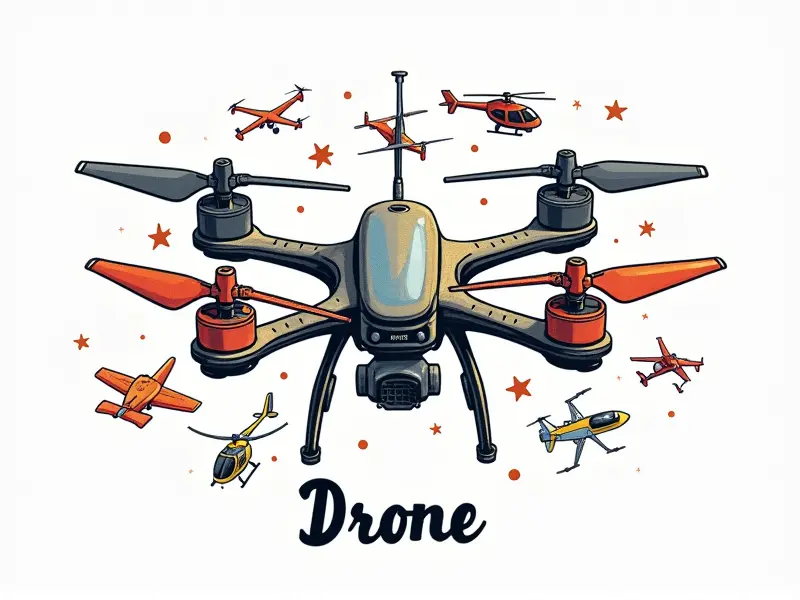What is stabilization in drones?

Understanding Drone Stabilization Basics
Drone stabilization refers to the technology and techniques employed to maintain a steady, smooth flight of unmanned aerial vehicles (UAVs). This critical aspect ensures that drones capture high-quality footage and data by counteracting external forces such as wind turbulence and vibrations. The primary goal is to achieve stable camera angles and precise control over drone movements.
Why Stabilization is Crucial for Drones
Stabilization in drones is essential because it directly impacts the quality of aerial photography, videography, and data collection. Without effective stabilization, footage can be shaky, blurry, or unsteady, making it difficult to analyze or share. Proper stabilization enhances user experience by providing smoother flight control and more reliable performance.
Types of Drone Stabilization Systems
Drones utilize various systems for stabilization:
- Gimbals: These are mechanical devices that keep the camera steady, offering three-axis rotation to counteract motion in all directions. Gimbals can be single-axis (pitch), dual-axis (pitch and roll), or tri-axis (roll, pitch, yaw).
- Gyroscopes: Gyroscopic sensors detect rotational movements around an axis and help maintain stability by adjusting the drone's orientation.
- Algorithms: Advanced software algorithms process data from multiple sensors to predict and correct for instability.
Benefits of Drone Gimbal Stabilization
Gimbals offer several advantages:
- Smoother Video Footage: Gimbals ensure that videos are free from shakes, providing a professional and polished look.
- Better Image Quality: By reducing vibrations, gimbals enable sharper images with less blur.
- Enhanced Control: Users can focus on flying the drone while the gimbal handles camera stability automatically.
How Gyroscopes Improve Drone Flight
Gyroscopes are crucial components that detect and measure angular velocity, enabling drones to maintain a stable orientation. They work in conjunction with accelerometers and magnetometers to provide accurate data for flight stabilization algorithms. This synergy ensures smoother flights and better stability.
Choosing the Right Drone Stabilization Tech
Selecting appropriate stabilization technology depends on your drone's intended use:
- Aerial Photography: Opt for high-quality gimbals with three-axis rotation to ensure smooth video and photo capture.
- Racing Drones: Consider lightweight, responsive systems that prioritize quick adjustments over camera stability.
- Multitasking Drones: Choose versatile stabilization solutions that balance performance and functionality across different tasks.
Top Tips for Drone Flight Stability
To improve drone flight stability:
- Balanced Weight Distribution: Ensure the drone is evenly weighted to prevent imbalance during flights.
- Regular Maintenance: Keep components such as propellers, motors, and sensors in good condition for optimal performance.
- Skillful Flying Techniques: Practice smooth maneuvers and avoid sudden movements that can destabilize the drone.
Common Issues with Drone Instability
Some common problems include:
- Vibration Interference: External vibrations from propellers or motors can cause camera shake.
- Sensor Malfunction: Faulty sensors may lead to inaccurate data and poor stabilization.
- Battery Issues: Weak batteries can affect motor performance, leading to instability during flight.
DIY Tips to Improve Drone Stability
Enhance your drone's stability with these DIY tips:
- Add Counterweights: Attach small weights strategically to balance the drone and reduce vibrations.
- Upgrade Propellers: Use high-quality, balanced propellers for smoother flight performance.
- Tune Motors: Adjust motor settings for optimal power output without causing excessive vibration.
Advanced Techniques in Drone Balancing
For more advanced users:
- Custom Firmware: Modify firmware to fine-tune stabilization algorithms and improve overall performance.
- Sensor Calibration: Regularly calibrate sensors for precise data collection and accurate flight control.
- Dynamic Adjustment: Implement real-time adjustments based on environmental conditions and drone movements.
Enhancing Drone Performance with Stabilization
Effective stabilization techniques can significantly enhance a drone's performance by ensuring smooth, stable flights. By integrating advanced technology and adopting best practices, users can achieve superior results in various applications such as aerial photography, videography, and data collection.
Conclusion
In summary, drone stabilization is vital for achieving high-quality footage and reliable flight control. Understanding the basics of stabilization systems and choosing appropriate technologies based on your needs will greatly enhance your drone's performance. By following top tips and implementing advanced techniques, you can maximize stability and optimize your drone’s capabilities.

